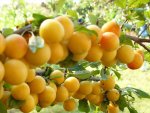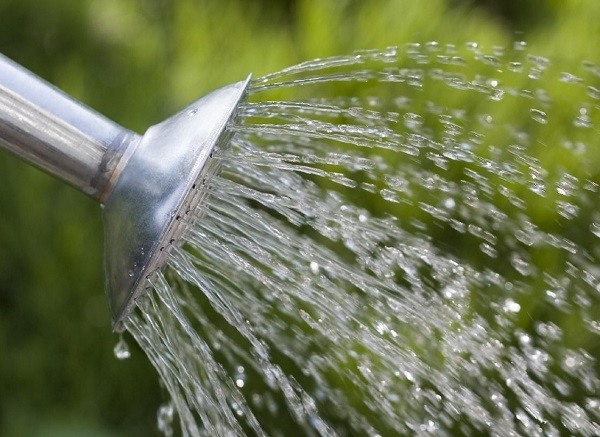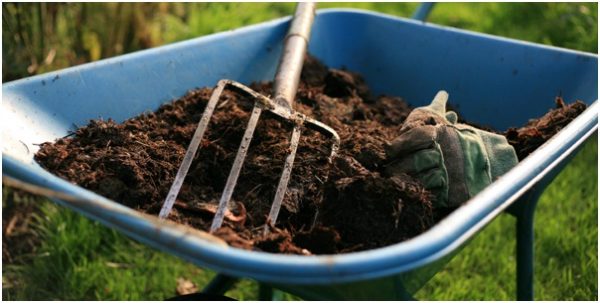Rules for growing cherry plum in the garden
Landing
Cherry plum should be planted in unprotected soil in spring. It is advisable to have time before budding on the tree. If you skip this period, the period of acclimatization in young plants will be delayed, and they may be exposed to autumn frosts. If the seedling is placed in a container, you can plant it at any time convenient for you.
The basic rule of successful cultivation of cherry plum is to prepare in advance for the procedure. In particular, it is worth preparing pits for planting in advance. "Holes" for planting should have a length, width and height of 0.6 meters. If you plan to plant several individuals at once, then the pits for them need to be located with a distance of 3 meters. After the holes, they must be filled with waterproof soil with useful substances. In such a soil, humus, potash and phosphorus fertilizers are necessarily introduced, which are abundantly moistened. At the end, the pit is covered with earth and left alone.
You can also grow a plum from a stone, but it is much faster and more effective to acquire a culture seedling.
With the onset of spring, it is necessary to remove the soil from the previously prepared hole, and make a small "mound" in the middle of it. It is over this mound that the roots of the seedling are distributed. Near the edge of the pit, it is necessary to drive in a wooden peg, which will rise above the surface by at least a meter. The seedling is placed near the support, the straightened roots are covered with soil, compacted, and the individual itself is watered abundantly. The young plant binds to the stake. The depth of placement in the soil should be such that the root collar is flush with the earth's surface.
Further, the hole is covered with earth, and a small "ditch" is made around it, intended for irrigation. You need to moisten each culture in the amount of one and a half buckets.
For long-term preservation of moisture, the earth around the plant is mulched by at least 5 centimeters in thickness.
If, before planting, the seedlings were located in a container, then first it is worthwhile to water the soil abundantly, and after planting, moisten it again.
Landing video
From the video you will learn how to plant the cherry plum fruit tree correctly.
Care
Cherry plum planting and care consists of watering, systematic loosening of the soil, eliminating weeds, as well as combating plant diseases and parasites.
It is possible to successfully grow plums at home only by mulching the land around the planting.
It is worth watering individuals only during drought periods. For the entire development cycle, the plant needs only a couple of times of moisture: after the tree stops flowering, after the growth of young stems stops, and after the fruits acquire the proper color (mostly yellow). 5-6 buckets of water are enough for one tree.
Cherry plum also needs regular feeding. Potassium and nitrogen are the most important for the fruit tree, relatively little phosphorus is needed. Organic fertilizers should be applied in the fall: every 2 or 3 years. 5 kilograms of nutrients are enough per unit area (square meter).
Minerals are brought in annually. Nitrogen should be fertilized three times. For the first time - in the spring (before the flowering of the tree), again - at the beginning of summer, when the ovary appears and forms, the last time - in the middle of summer.
The last dressing can be applied in parallel with potash fertilizers in an amount of no more than 30 grams per unit area.
If, during planting, the plant was replenished with both minerals and humus, it is not necessary to feed the individuals until the fruits appear.
It is necessary to correctly calculate the amount of nutrients when they are introduced. After all, an excess of fertilizers even more negatively affects the plant than their deficiency.
Pruning
It is not possible to harvest a rich home harvest of plums without pruning the tree. In the spring, pruning should be aimed at shortening shoots that are more than half a meter in length. This will speed up the development of buds on the tree, from which strong, long shoots can form. In the summer, the processes that have developed actively are pinched. The entire procedure ends in July. Young individuals grow upward, and fruit-bearing ones grow wide. The height of the tree should not exceed 3 meters. Therefore, in all possible ways it is worth limiting it.
In the first years of a tree's life, pruning should be aimed at forming a trunk. At first, it should be no more than half a meter in height and have 3-4 main stems. Before the first branch, the trunk must be clean, and any growth must be removed. All young shoots should be pinched for their speedy lumbering.
In order for the seedlings to turn into trees, it is worth forming a long-tiered thin crown in the first years after planting. That is, several main branches (up to 5) should be laid at a height of 0.75 meters from the ground.
Do not prune too "actively". After all, excessive removal of organs activates the growth of new stems and provokes a thickening of the crown. As a result, the yield of the tree can be significantly reduced. Fruiting individuals only need to thin out branches and remove damaged organs. Annual shoots should be shortened as actively as possible. In the case of their active growth, in the summer, these organs can simply be pinched.
Cherry plum can also be grown in shrub form. To do this, you just need to thin out the crown and shorten the intensively developing shoots. At the same time, caring for the bush will not be problematic.
Reproduction
The main methods of reproduction of this type of plum are budding on the stock and grafting.
It is also possible to propagate cherry plum using the kernel, that is, the seed. The seedlings obtained in this case are well pollinated by trees growing nearby, and bear fruit well. The plant does not tolerate transplants very well, so it is advisable to plant the bone immediately to a permanent place. This will allow the seedling to develop fully.
However, the most common breeding method is grafting. It can be of several types:
- T-shaped - a type of budding. It is carried out during the period of active movement of juices through the plant organism.
- In the butt. This method is more common as it is quite simple to implement. Held during the warm season. In the spring, it is carried out before the active movement of juices through the plant. As a result, the cuttings take root better.
- Cherry-plum supply. For rootstock, it is permissible to use seedlings of a wild-growing variety. They are compatible with any kind of plum, tolerate moisture deficit and are unpretentious to environmental conditions.
- Clonal rootstock, which is obtained as a result of engraftment of cuttings of cultivated varieties. The resulting plants are easy to propagate and disease resistant.
- Plum grafting. This method is quite popular. The basis for grafting is usually a variety of Canadian plum, thorny plum. They are characterized by resistance to frost and perfectly combine with cherry plum, making it resistant to cold. Different varieties can take root on the same tree, which will perfectly save space.
However, the vaccination method has its drawbacks. For example, low resistance to frost. In severe frosts, grafted trees freeze completely.Therefore, in areas where the climate is severe enough, it is better to grow seedlings obtained as a result of vegetative propagation. For better survival of cuttings, they must be in conditions of high humidity. Own-rooted culture is able to quickly recover, even in case of freezing.
Diseases
To protect young individuals from diseases, it is enough to treat them with a solution of copper sulfate.
So, if you take proper care of cherry plum, your own crop will delight you.
Video "Leaving"
From the video you will learn how to care for cherry plum.



